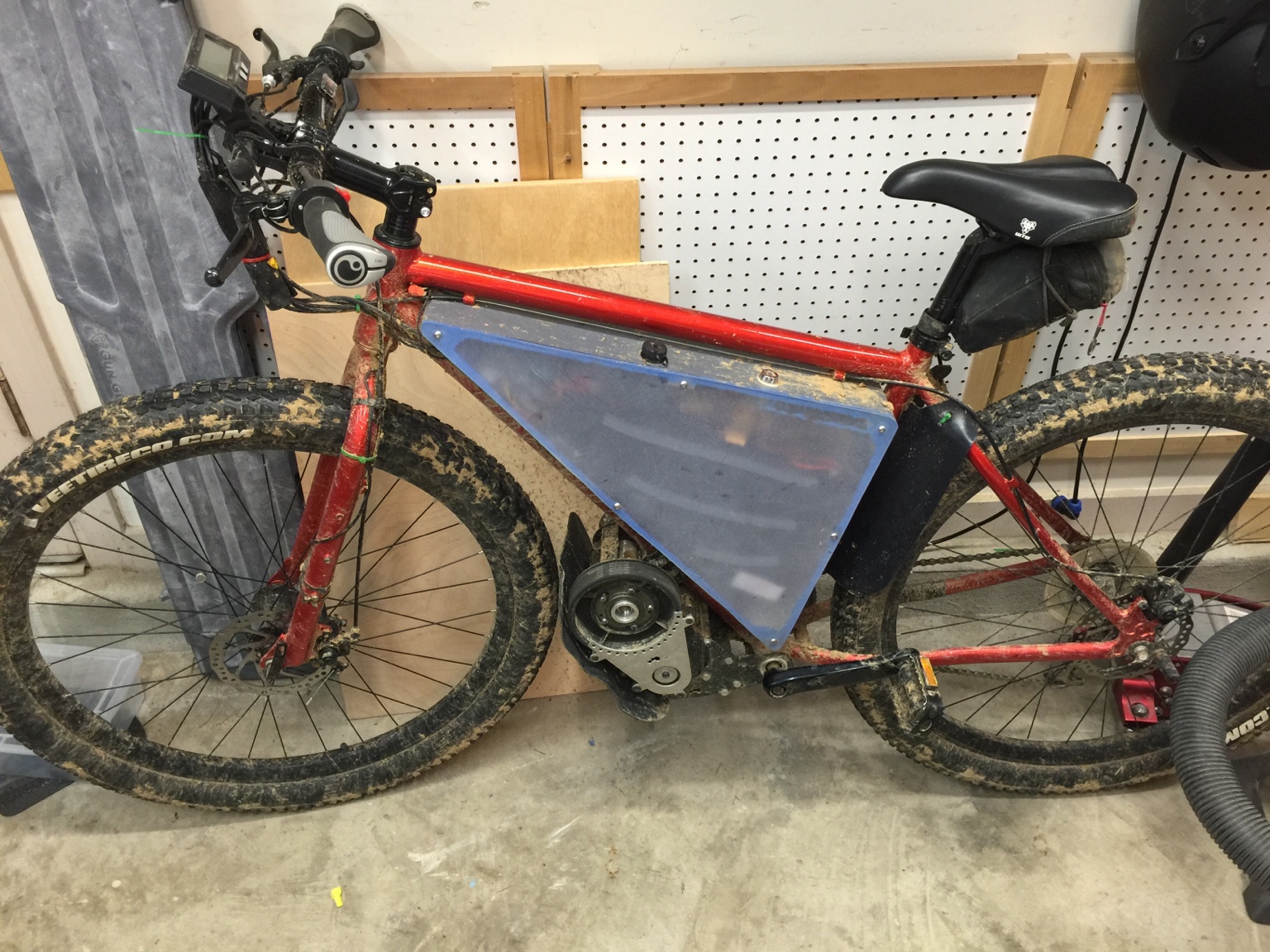LightningRods
1 MW
eMTBHunter said:I'd think starting at 18 is reasonable given the elimination of some reduction on the chain secondary. I was out on mine today and for my particular purpose, 30 mph top end is plenty, and I spent most of my time in the 10-15 mph range on the trails.
Sounds good. I'm hearing 16, 18 and 20. 18 is in the middle so that seems safe enough.
What sort of derailleur are you contemplating? To be able to shift into 42+ tooth sprockets seems to require either something like the oneup radr cage or wolftooth goat link to modify a 10 speed derailleur, or an 11 speed mech designed for the wide range 11 speed cassettes.
What's different about what we are doing is that we don't need to access the teensy sprockets. Our starting point is halfway through a normal cluster. So my plan is to make a longer hanger that resets the starting height from an 11t to that of an 18t. The largest sprocket that we can run will be dictated by what the derailleur will shift to. I'm planning no more than 15% jumps from one gear to the next. As far as type of derailleur, just one of the long arm Shimanos made for mountain gear sets. Standard off the shelf stuff.
Another thought, what if we used a 10 or 11 speed, but beefed it up by having the largest diameter spacers that still allowed full chain engagement in the teeth of each sprocket? Maybe even weld it. Get it as close as possible to one solid block so the unsupported radius on each sprocket is minimized and that should significantly strengthen the sprockets as the highest bending force is going to be toward the center of each sprocket.
The main problem with a 10/11 speed that the physical spacing between the sprockets is much tighter. We don't even need seven gears. Why would we go to 10 or 11? Remember that 10 and 11 speed gear sets are a product of the pump bike world. They're trying to make the most of 250 watts and a 100 rpm power band. Thin, weak sprockets is a price they're willing to pay to get more mechanical advantage on their puny "motors". We have too much power, too many rpm, and most bicycle gear systems have too many gears, spaced too close together, that are too weak.
I have a Specialized hard tail mountain bike that I'm going to use as my test mule. It has a 7 speed rear cluster on it from the factory. I'm going to get a 2x wide ratio set cut in stainless and see how it goes with 15:1 motor reduction. If it works like I hope I'll make the gear sets available to anyone who wants one.









